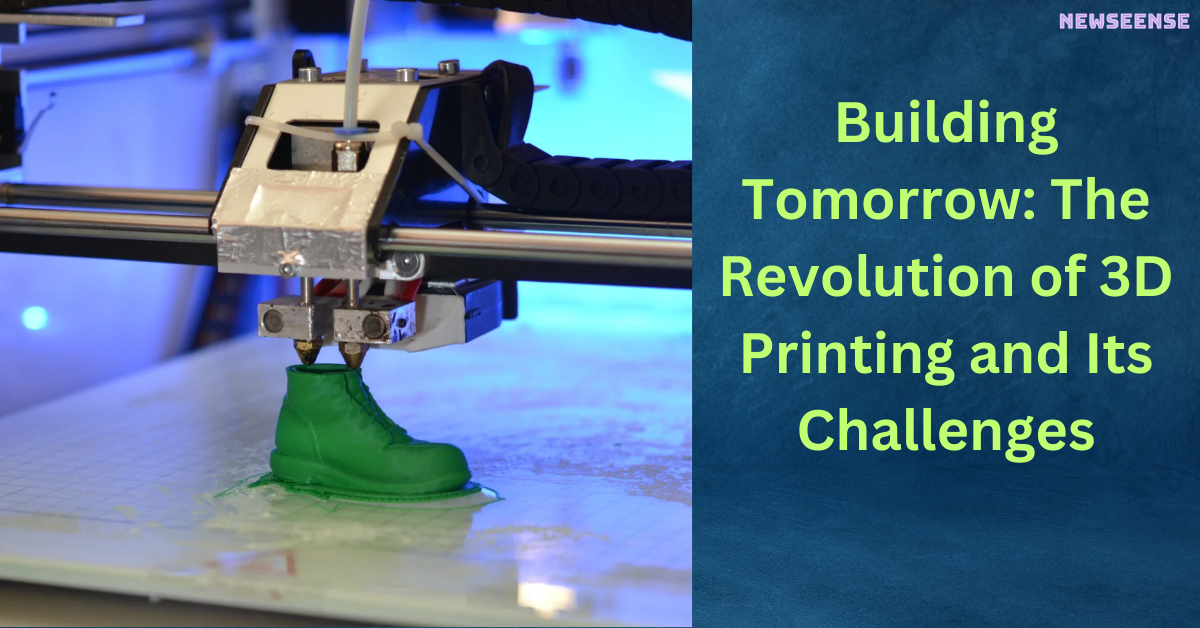
Revolutionizing Creation: The Power of 3D Printing
In the realm of technological innovation, 3D printing, or additive manufacturing, emerges as a transformative force, capable of reshaping industries and challenging traditional manufacturing methods. This groundbreaking technology builds three-dimensional objects layer by layer, from digital files, introducing endless possibilities and a host of challenges.
Table of Contents

1. The Essence of 3D Printing
At its core, 3D printing is a process that goes beyond the conventional, creating objects layer by layer based on a digital blueprint. Despite its seemingly low-tech appearance, this technology harbors the potential to revolutionize manufacturing and usher in a new era of unprecedented possibilities.
2. The Future of Manufacturing Revealed
Imagine a world where factories seamlessly print spare parts on-site, eliminating the need for extensive warehouses and logistical challenges. With 3D printing, entire assembly lines could be replaced, opening doors to efficient, cost-effective, and sustainable production methods.
3. 3D Printing Beyond Boundaries
The scope of 3D printing extends far beyond machinery and spare parts. In the medical field, the potential to print human tissue for transplants hints at groundbreaking advancements. However, the technology’s versatility also raises ethical concerns, with the prospect of printing weapons and even food.
4. Balancing Opportunities and Challenges
While 3D printing offers numerous opportunities, it brings forth a set of challenges and obstacles. The environmental impact of traditional manufacturing could be mitigated with 3D printing’s reduced material usage, but we must scrutinize the environmental footprint of the printers themselves.
5. The Intellectual Property Dilemma
Enter the realm of intellectual property, where 3D printing disrupts traditional norms. Counterfeiters leverage this technology to produce imitation goods easily and inexpensively, posing a significant threat to genuine products and their creators.
6. Mass Personalization: A Paradigm Shift
Amidst challenges, one aspect that stands out is the potential for mass personalization. 3D printing allows for the customization of products and designs, catering to individual preferences. From personalized sneakers to food tailored to unique nutritional needs, the possibilities are as diverse as they are exciting.
7. The Road Ahead: Navigating the Future of 3D Printing
As we tread into the uncharted territory of 3D printing, it is imperative to balance the promises of innovation with the responsibility to address challenges head-on. The journey ahead involves not just embracing a new wave of technological advancement but also navigating the ethical, environmental, and intellectual property landscapes that accompany it.
In a world where creation knows no bounds, 3D printing stands as a beacon of possibility, reshaping industries and pushing the boundaries of what we once deemed impossible. The future, it seems, is crafted layer by layer.
Also read: https://newseense.com/googles-dazzling-new-years-eve-doodle-rings-in-2024-with-a-leap-of-joy/
- BJP President JP Nadda Issues Notice to Dilip Ghosh Over Controversial Remarks on Mamata Banerjee
- Ram Charan and Kiara Advani’s ‘Jaragandi’ Song from Game Changer Released
- Pre-Match Banter: Rohit Sharma’s Flying Kiss Recreation Adds Spice to MI vs SRH Clash
- Swami Smaranananda Maharaj, President of Ramakrishna Math and Ramakrishna Mission, Passes Away at 95
- Stand-up Comedian Munawar Faruqui Breaks Silence on Social Media After Mumbai Police Detention